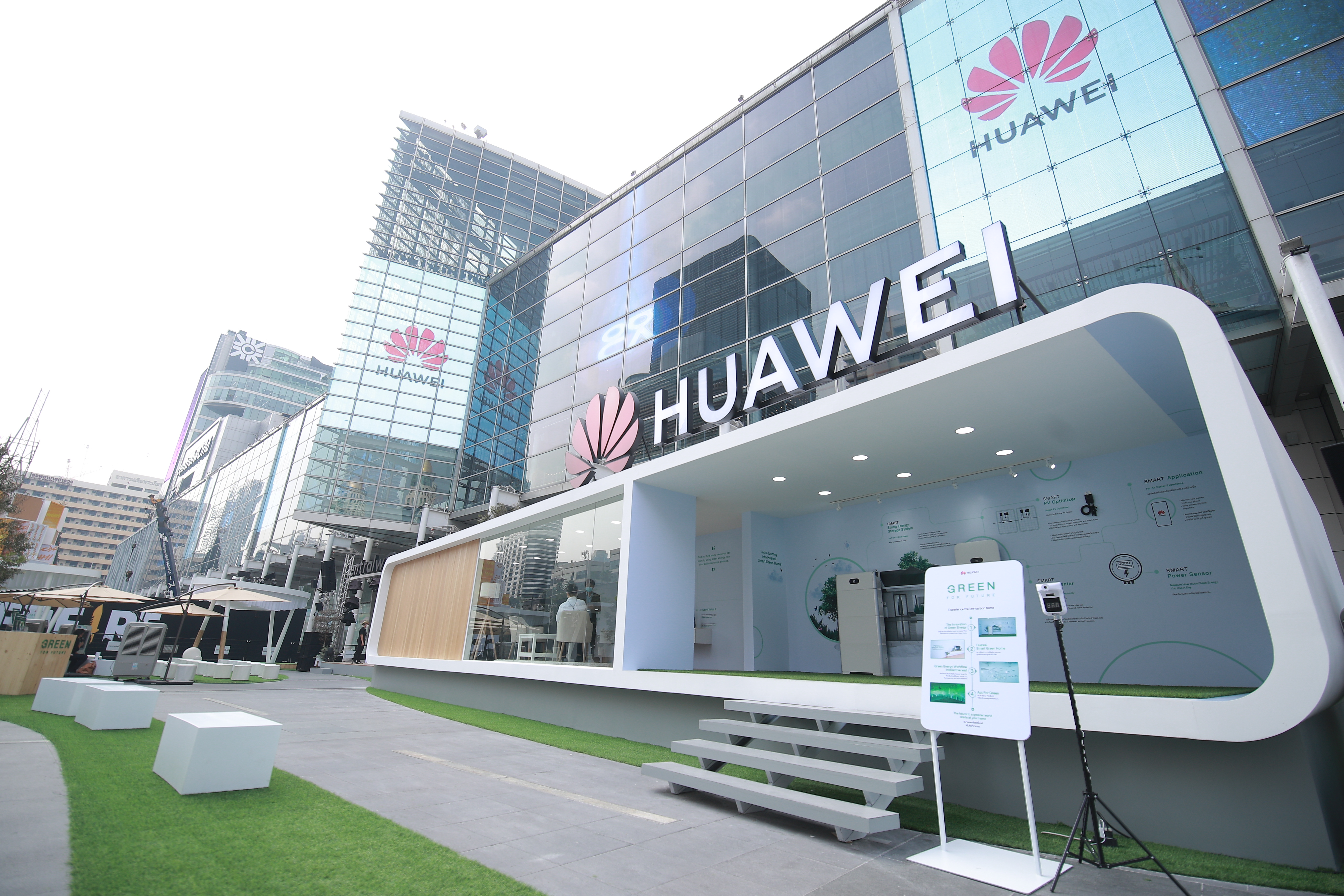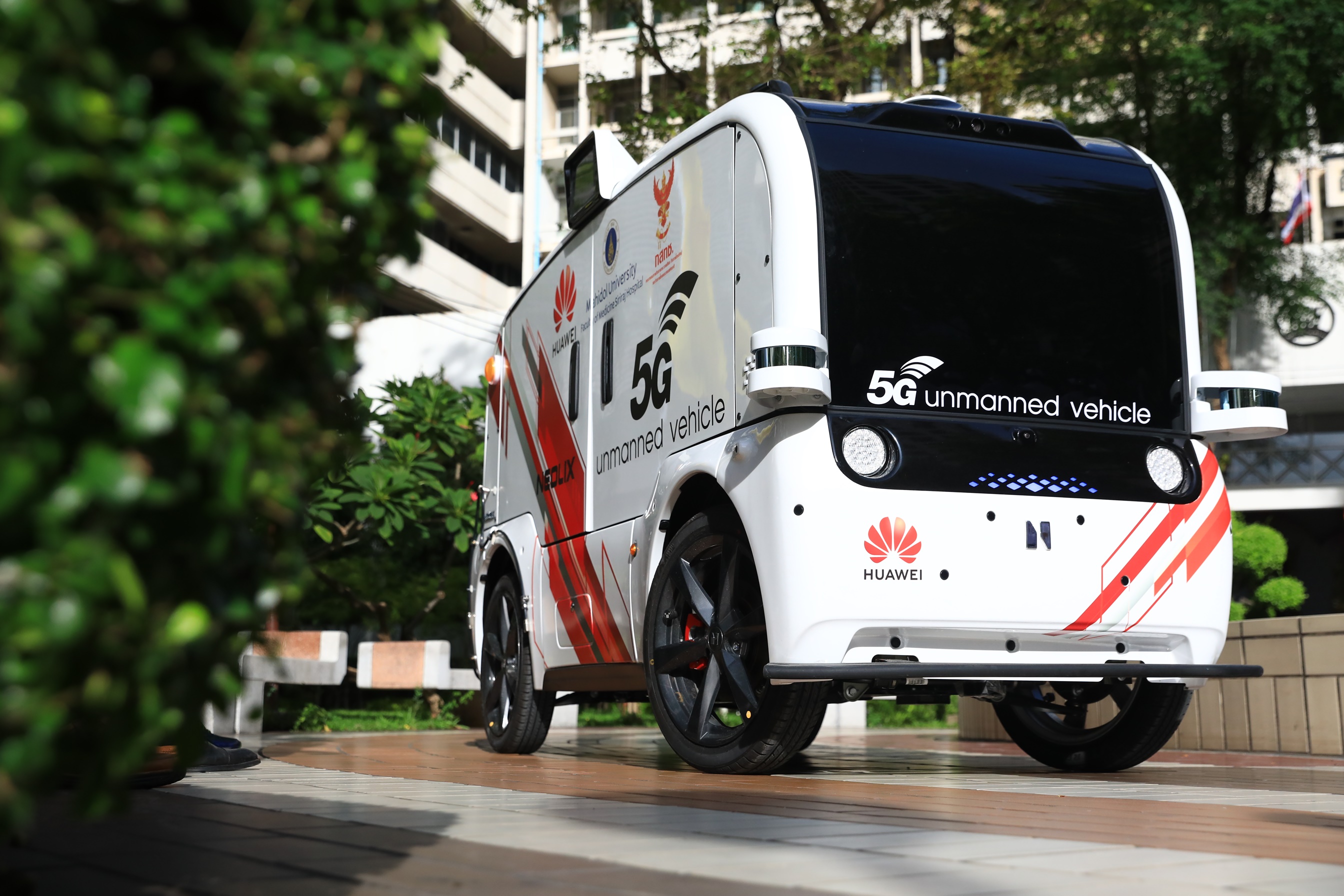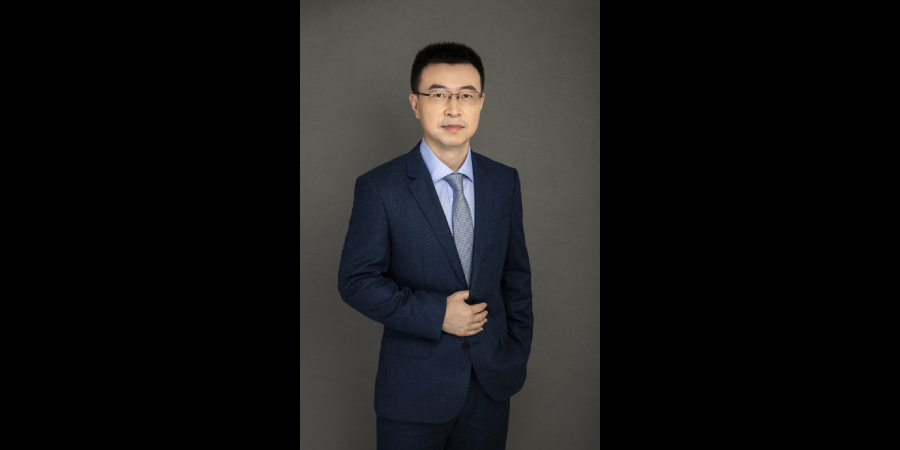The Asia Pacific region is a breeding ground for innovation and technological excellence. Telecom Review met with Simon Lin, president, Huawei Asia Pacific to discuss the vendor’s presence in the region and its role in accelerating digital transformation and empowering ICT talent.
The COVID-19 pandemic has accelerated the digital transformation of all regions, including Asia-Pacific. Advanced technologies such as 5G, cloud, AI, and computing have all come together to create unprecedented opportunities for the ICT sector.
According to the Asian Economic Integration Report 2021, Asia Pacific would reap an economic dividend of more than $1.7 trillion yearly or more than $8.6 trillion to 2025. The increased use of digital technologies will result in about 65 million new jobs created yearly in the region until 2025.
According to Huawei’s Simon Lin, “fundamentally, our future world will be based on 3 driving forces: business, technology and sustainability. First, business-driven forces will arise from the application of digital technologies in various industries to drive digitalization and improve the quality of services.
“Second, technology-driven forces will emerge from new connectivity including 5G Advanced, 6G and IPv6+ and computing technologies that are evolving to enable new applications and enable a new technology environment.
“Lastly, sustainability-driven forces including green development, social responsibility, and fast response to emergency situations will profoundly change people’s lives. Huawei is heavily investing in this area, not only in the equipment energy consumption, but is striving to create a new energy saving generation.”
This year, Huawei has been following the global theme ‘Lighting up the Future’ through business, technology and sustainability, and aligning them with the unique opportunities in Asia Pacific.
Even though the Asia Pacific region is ripe with digital opportunities, however the degree of readiness differs. “Huawei’s Global Connectivity Index (GCI) shows that India, Indonesia and Philippines ranked respectively 63, 58 and 59 out of all countries, while Singapore ranked No.2. Philippines and Indonesia are the lowest in fixed broadband speeds compared to Singapore, and Thailand at the front. More broadly, cloud penetration in the region is less than 20%, 4G mobile coverage is slightly above half, and FBB reaches barely 1/3rd of households”, Simon Lin explained.
Huawei is very much focused on CSR in order to improve peoples’ lives through technology. Under the Tech4All initiative, for example, Huawei’s RuralStar program provides Internet and connectivity for underdeveloped regions since 2017. It has successfully cooperated with 12 operators in 8 countries, including Thailand and Indonesia, in its first year.
In the remote mountains of Chiang Mai, Thailand, for example, Huawei's AirPON solution reuses existing poles and fiber resources, created an "air network equipment room" that has provided connectivity to more than 10,000 villages.
Sustainability is also on top of Huawei’s agenda, according to Huawei APAC’s president. The Chinese colossus is striving for a greener and more sustainable digital world.
“Huawei will increase its investment in sustainable green solutions, leveraging clean power generation, electric transportation, and smart energy storage, to support the Asia Pacific region’s goals of cutting carbon emissions, promoting renewable energy, and contributing to a circular economy”, he said.
All of what has been mentioned by Simon Lin reflects Huawei’s efforts to offer a diversified portfolio that caters to everyone’s needs, whether in developed or developing regions.
“Huawei is providing advanced technologies in the fields of 5G, AI, cloud and blockchain. We are transfering our experience from advanced markets into the developing and underdeveloped countries to facilitate digital transformation. One of the examples is we’re using some of our advanced technologies to improve 4G networks.”
In MWC 2022, Huawei is presenting what's driving innovation in digital infrastructure. This theme refers to all the digital opportunities that Huawei is bringing to every person, home and organization for a fully connected, intelligent world.
“This year at Mobile World Congress 2022, I can think of no better opportunity to re-emphasis this vision and extend it to our view for the future world of 2030.”
For Huawei’s Simon Lin, the future world at 2030 will have four main characteristics accross every aspect of life, industry, society and economy.
In terms of digital life, in 2030, there’ll be more than 1 billion XR users worldwide, and 60% of new cars will support C-V2X features. Various application requirements of digital life will drive the per capita monthly wireless cellular network traffic to reach 600 GB.

Then there are the digital industries that will bring rejuvenation to every enterprise. The amount of data generated worldwide each year is predicted to exceed one trillion gigabytes, equivalent to the storage capacity of 4 trillion 256 GB mobile phones. The cloud services will account for more than 87% of enterprise application spending.
In 2030, digital infrastructure will also play an important role in enabling energy conservation and emission reduction in a wide range of industries, making our planet a better place. Renewable energy will account for 42% of the industry's electricity generation. ICT technologies will reduce CO2 emissions by 20%. And the ICT industry itself, through more energy efficiency optimization technologies, will reduce greenhouse gas emissions by 45% compared to today.
Last but not the least, the digital carriers are the basis for enabling the future digital world. By 2030, the total number of connections will exceed 200 billion, spread across smartphones but more importantly connect a world of sensors that includes cameras, meters, clothing and cars. In addition to connectivity, carriers will need to provide more computing and storage capabilities to Industries and will be the pioneers of green development with 80% of ICT digital infrastructure using clean energy.
“The intelligent world will redefine experiences, optimize operations, and ignite new business. Embracing business, technology and sustainability we hope to work together with customers, partners, governments, industry and consumers to enrich lives through this new digital future”, said Simon Lin.
The Asia Pacific region is at the forefront of digital economy growth and digital transformation. Singapore, for instance, released its Smart Nation 2025 blueprint. Indonesia and Malaysia released strategies to go digital, Bangladesh has released its strategy called Digital Bangladesh, and Thailand announced its vision to become a digital hub in ASEAN.
On Huawei’s role in supporting national digital vision, Simon Lin said, “In this great journey, we are committed to supporting the region’s digital vision as a key contributor. Towards this goal, we will focus on three key areas: Connectivity and Intelligence, Low-Carbon Development, and Digital Inclusion initiatives.”
He explained that in the first place, Huawei will dive into digital infrastructure and contribute to building a connected Asia Pacific. “Digital Infrastructure, for me, means digital connectivity, including 4G, 5G, fiber and IoT etc. The pandemic is driving digital subscribers and digital services growth fast. All these are driving massive demand for connectivity infrastructure. And Huawei definitely plays a leading role in this area, not only in product and solution, but in fundamental theory research and industrial design as well.
“Digital Infrastructure also means cloud computing and intelligence, we will build the cloud Infrastructure for an intelligent Asia Pacific, including contributing to data center, cloud service and AI enablement to support data monetization and promote industry digitalization.”
According to Gartner’s latest report, HUAWEI CLOUD was the fastest growing cloud in global IaaS market with grow rate of 220%+, Huawei are ranking No.5 in global in terms of market share. In Asia Pacific, Huawei is operating 7 Availability Zones in Thailand, Hong Kong, Singapore with local service teams in over 10 countries.
Huawei is also supporting low-carbon development in Asia Pacific. Simon Lin explained, “Through heavy R&D investment, the carbon emission for our E2E products and services reduced 80+% based on the same capacity comparison. At the same time, we help our customers save energy and protect the environment. Huawei combines digital and electronic technologies to develop innovative digital power services to use energy as efficiently as possible, and minimize the carbon footprint of ICT infrastructure, by leveraging clean power generation, electric transportation, and smart energy storage. By end of 2021, Huawei have helped global customers reduce carbon emissions by 230 million tons.”
For example, in Singapore, Huawei supported Sunseap Group with industry-leading solar inverters to build one of the world's largest offshore floating farm, contributing to the clean energy landscape in Asia Pacific. And it is set to continue this path in 2022.
Low carbon development is a global concern and requires uniform technical standards. Huawei will work with regional customers and partners, to promote industry standards, drive the energy revolution, and build a green digital Asia-Pacific.
Simon Lin added, “We will keep driving digital innovation for an inclusive Asia Pacific and leave no one behind. In our vision, a digital world is not just about technology. It is about people and humanity. In the region, for the next 3 years, Huawei will invest US$100 million to build Asia Pacific startup ecosystem. In the next 5 years, we will invest US$50 million to develop 500,000 digital talents.”
One example is in Malaysia where Huawei launched TECH4ALL initiative to support bridge digital divide. Through Huawei IdeaHub smart screen, students in remote areas can have access to digital and interactive learning. And we will continue to do in 2022.
“We believe Huawei’s business growth is based on our customers’ business success and the entire social well-being improvement. As I mentioned, digital infrastructure, low carbonization and digital inclusion are three initiatives we will continue to do in 2022.”
On the new wave of industrial digital transformation, Huawei APAC president explained that it was deeply integrated with consumer market (e.g. OTT, on-line media, bam etc.) and now rapidly stepping into business market and traditional industries.
“For me, digitization occurs in different levels. Traditional industries like agriculture, mining and steeling, construction etc. are in an early stage, which focuses on energy flow, material flow and person flow etc.. ICT plays the role of a support system. Whereas industries including transport, education and electric grids are in fast transition stage, where ICT is also under transiting from the support system to the production system. Finally, industries like media, bank and OTT are in an advanced stage focused on information flow and capital flow. ICT acts more as a production system here.”
The industries in the early stage have more requirements in terms of connectivity and those in the advanced stage have more requirements on computing and intelligence.
“We leverage 5G, cloud and AI to help industries go digital. Together with carriers and other partners, we are deploying 5G in the healthcare, ports, mining, manufacturing, and education sectors across the region. To fight the pandemic, we helped Thailand develop relevant applications for 5G-powered remote diagnosis and e-ambulance. We also helped operator setup 5G private network to enable car maker more intelligent in smart manufacturing.

“Second, we help industries in the region rapidly move to the cloud, for example, based on HUAWEI CLOUD, together with partners, we help customer build service-orientation digital system, provide e-government service, digital bank service and smart city service to drive digital economy growth. We launched Spark Program last year to develop the start-up ecosystem by providing cloud computing, financial support, and talent training for tech startups in the region. We will promote Spark Program in more ASEAN countries by investing US$100 million over the next three years to help build a startup ecosystem in the region.”
Moreover, Simon Lin highlighted that Huawei will continue investing in Asia Pacific and building more data centers. “We will continue keeping innovating our cloud and AI solutions and digital platform to create steady value for local enterprises, especially SMEs. We believe all countries and all industries in region will succeed in their drive to go digital. We will extend our roots deeper and do our part during the region's next 10 golden years of digital transformation.”
There is no doubt that Huawei is enabling digital transformation in Asia-Pacific, unleashing industry dividends in digital economy, and facilitating leapfrog development.
“We are committed to investing in R&D innovation and bringing value to the Asia-Pacific region. Huawei invests over 10% of its revenues into R&D annually,” said Simon Lin.
Huawei has established three research centres in the Asia-Pacific region in Hong Kong, Singapore, and India; five labs and innovation centres in Singapore, Hong Kong, and Open Labs in Bangkok, AI Lab in Singapore, and a 5G innovation centre in Thailand. Moreover, the world's largest Global Service Centre (GSC) was officially established in Bengaluru, India in 2016, with over 3000 experts and 24/7 support in operation.
In terms of 5G, Huawei is integrating fifth generation technology with cloud, AI, computing and applications to develop a new 2B blue ocean.
In fact, the first and largest 5G smart hospital project in ASEAN, Thailand Siriraj World Class 5G Smart Hospital project in Bangkok, comprises nine sub-projects including smart emergency medical service, pathological diagnosis system with 5G and AI, smart logistics with 5G self-driving car, multi-access edge computing and a hybrid cloud system. This 5G hospital sets up a model for the digital health industry.
In addition, Huawei is striving to build the right >ecosystem. At the level of startups, Huawei launched its Spark program to accelerate deep tech startup growth in Asia Pacific and provide Cloud and AI technical support, funding, consulting support and personnel training for technology SMEs, aiming to cultivate the cloud ecosystem and advance digital economy in the region. Currently Spark is active in Singapore, Hong Kong, Malaysia and Thailand and we have committed US100M investment over the next 3 years into the APAC startup ecosystem.
Moreover, over the next 5 years, Huawei has committed another $50 million USD to develop 500K ICT professionals in Asia Pacific. Huawei ASEAN Academy was launched in 2019. It was designed jointly with local governments, enterprises, universities, carriers, and industry organizations, to cultivate digital talent, and promote innovation within startups and SMEs. In the past 2 years, Huawei has invested $10 million USD and trained more than 130K ICT talents in the region with ASEAN Academies in 4 countries.
In the same context, Seeds for the Future Program has been launched in 15 countries in regions in APAC, with 5000+ students from 90+ academies. The 2022 version will be launched in the upcoming months in Asia Pacific. We’ll enrich online-training content and widen the cover of local students.

Last but not least, Huawei has been boosting HMS & Harmony Ecosystem. Huawei launched its first APAC DIGIX Lab in Singapore in 2021 to empower developers and ecosystem partners. Located at Changi Business Park, Huawei leverages Singapore’s importance as a growing technological hub in Asia Pacific, boosting the mobile ecosystem throughout the region.








